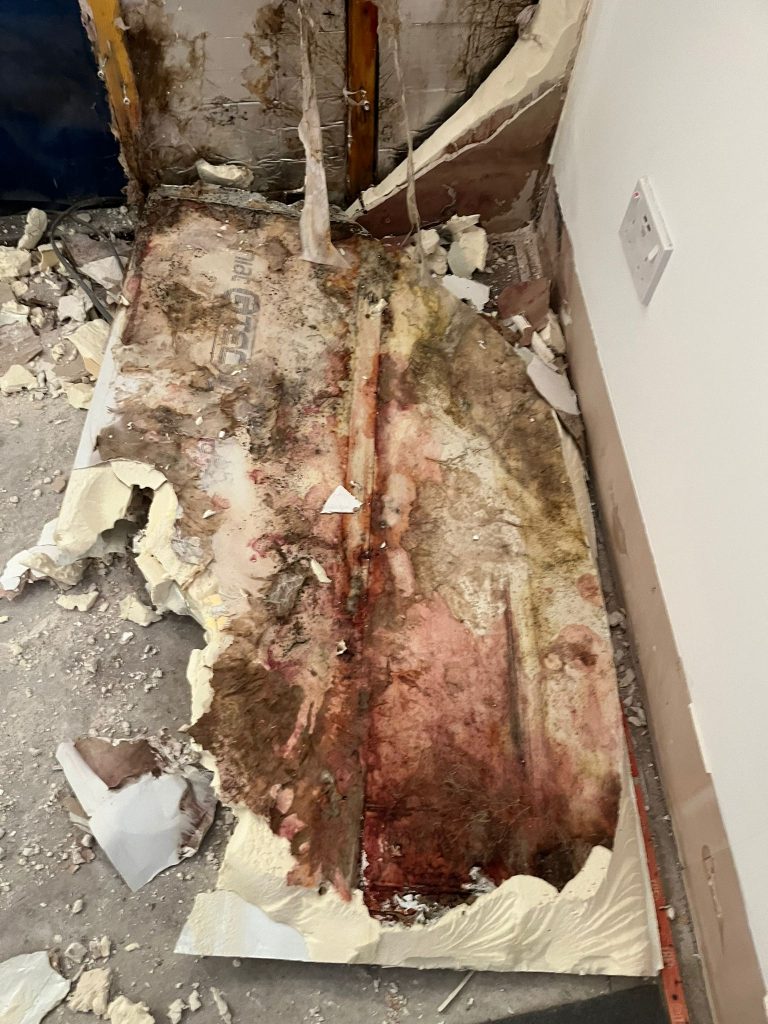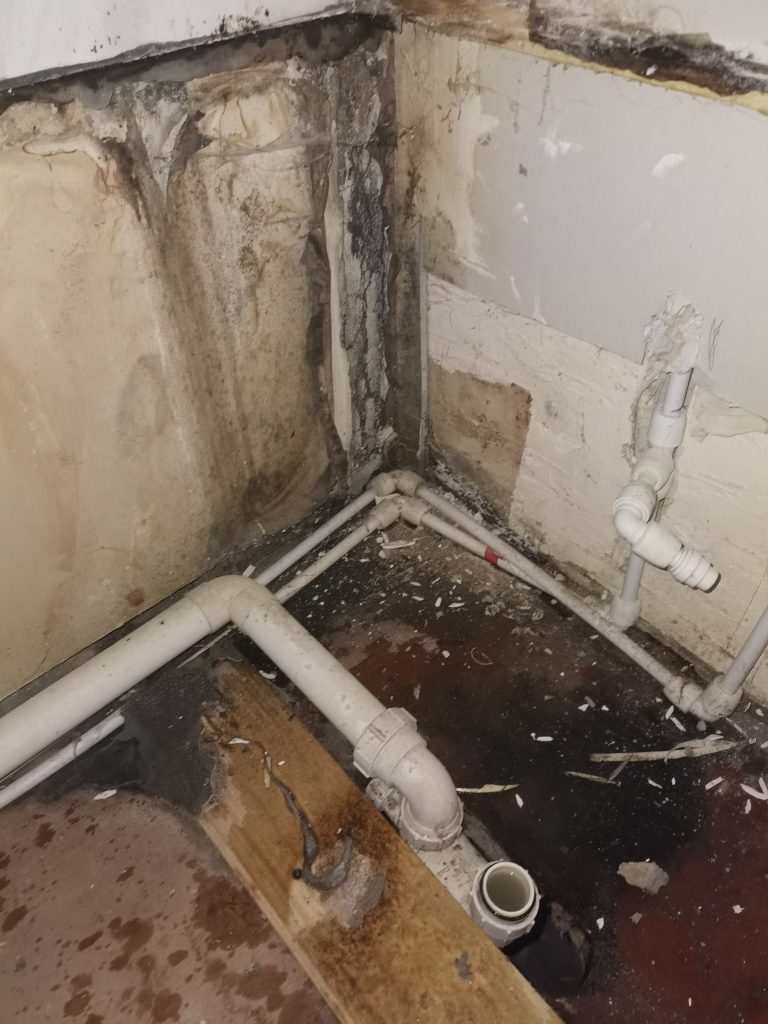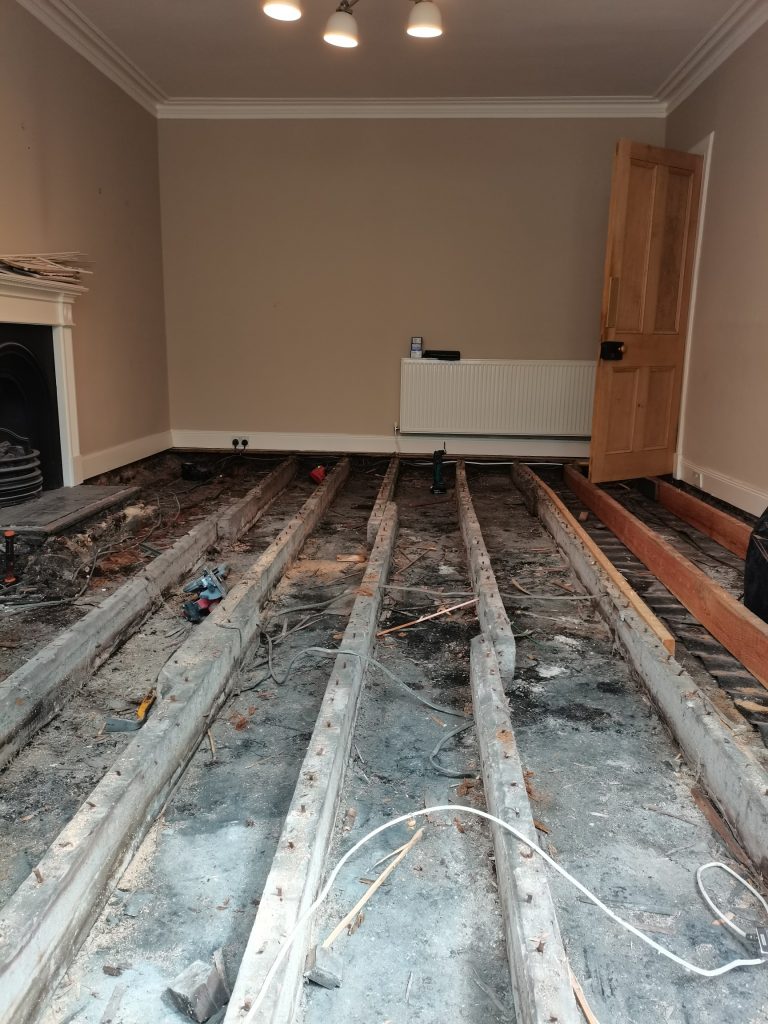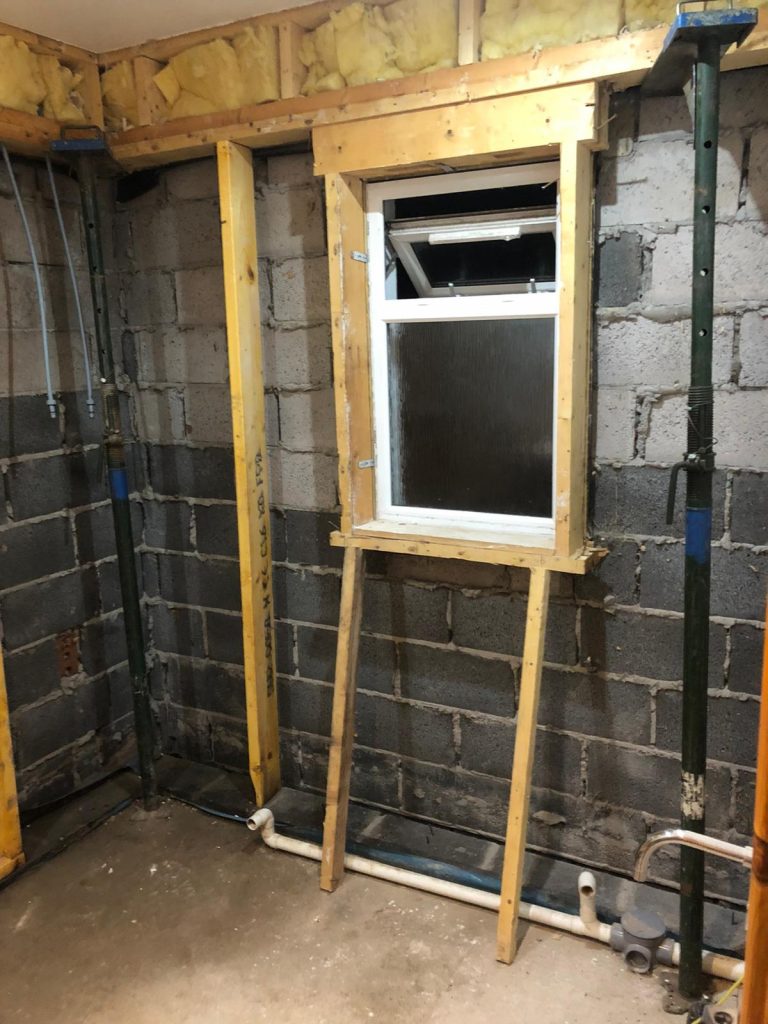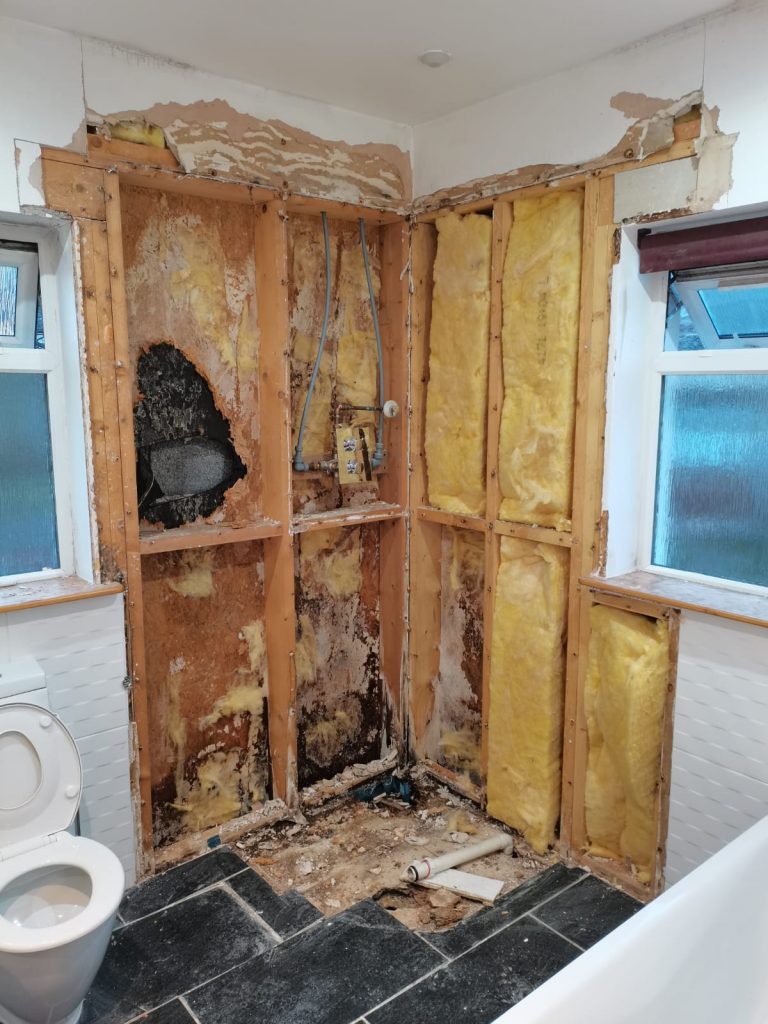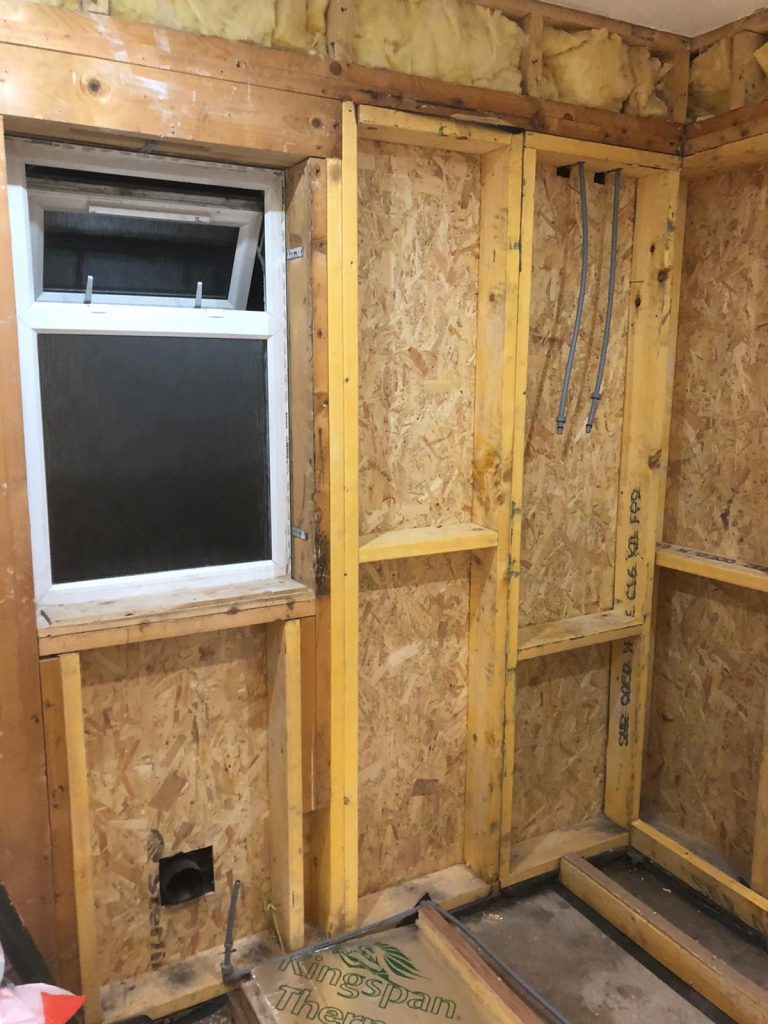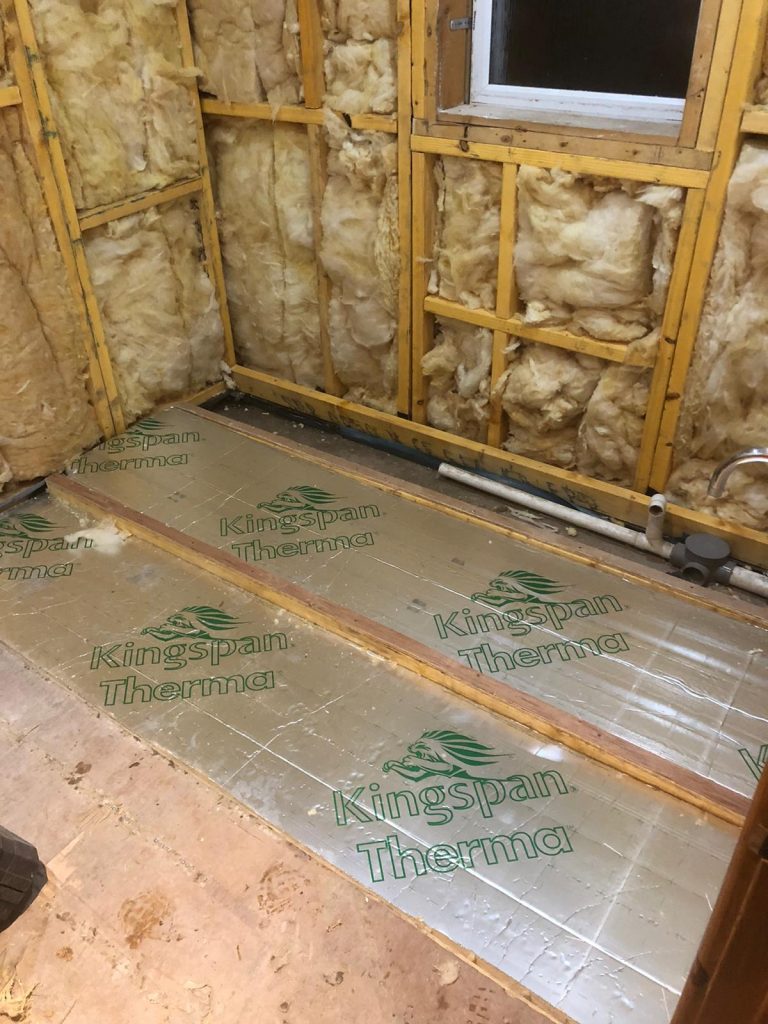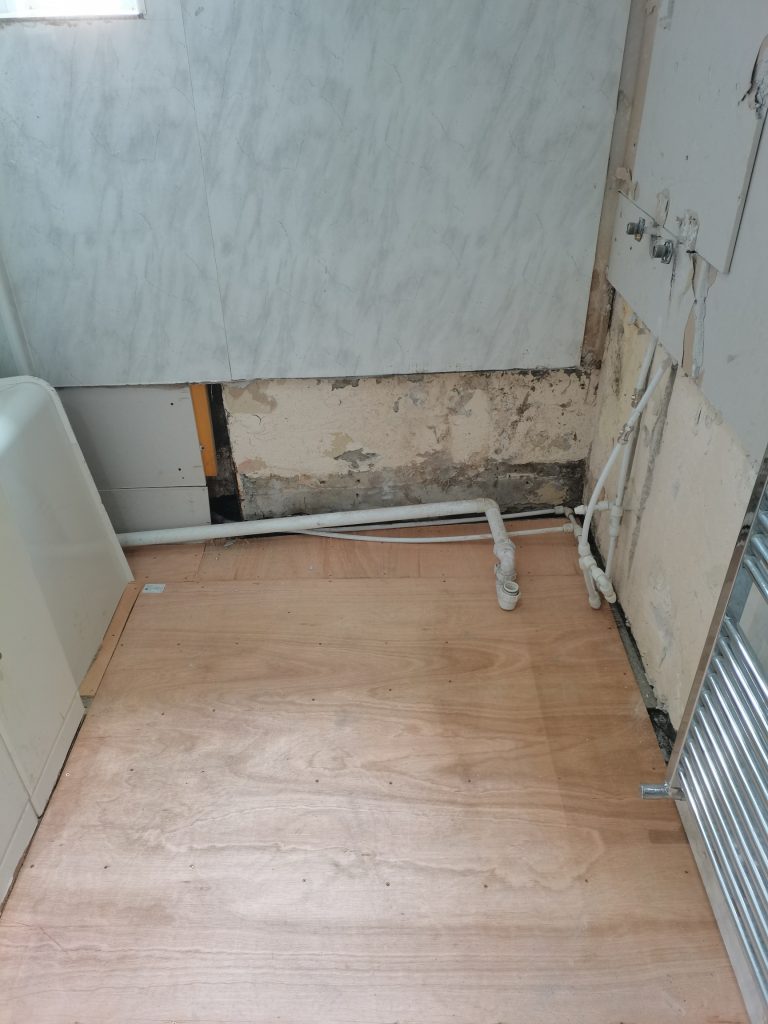Dry Rot develops extensively on the surface of infected timber and in still, humid conditions produces a mass of cotton wool-like growth. Water droplets are often produced on the surface of the mycelium. Mycelium spreads over the timber surface by the continued growth and branching of the delicate hyphal threads growing with time. Specialised strands develop within the mycelium and these supply water and nutrients to the growing fruiting bodies. The strands assume their real significance when the fungus spreads from infected timber onto the surface of adjacent stone or brick walls. The tiny hyphal threads penetrate the mortar joints and plaster layers and large areas of damp wall can then become infected. Dry Rot in many aspects is referred to as “the cancer of buildings” due to it’s vast and damaging spread across many materials. Serpula Lacrymans should be dealt with as a matter of urgency as the longer it is left unattended then the more damage it will cause. It can become structurally damaging to a building and even spread into neighbouring properties.
The dry rot lifecycle typically has four main stages, each with different indications to identify the dry rot problem. However, typical indications to look out for include:
- Wood shrinking while darkening in colour and cracks appearing in a brittle cuboidal manner. Often the wood is easily broken or crumbles in your hand
- White sheets or cotton wool like cushions or skin often varying in colour from grey to pure white
- Strands which have developed in the dry rot mycelium. These dry rot stands will be brittle and crack if bent
- Soft, fleshy pancake or bracket fruiting bodies that are orange/red in colour. The surface will typically have pores.
- Rust red coloured spore dust. This is often seen around the fruiting bodies above
- Active dry rot decay will produce a musty, damp odour
